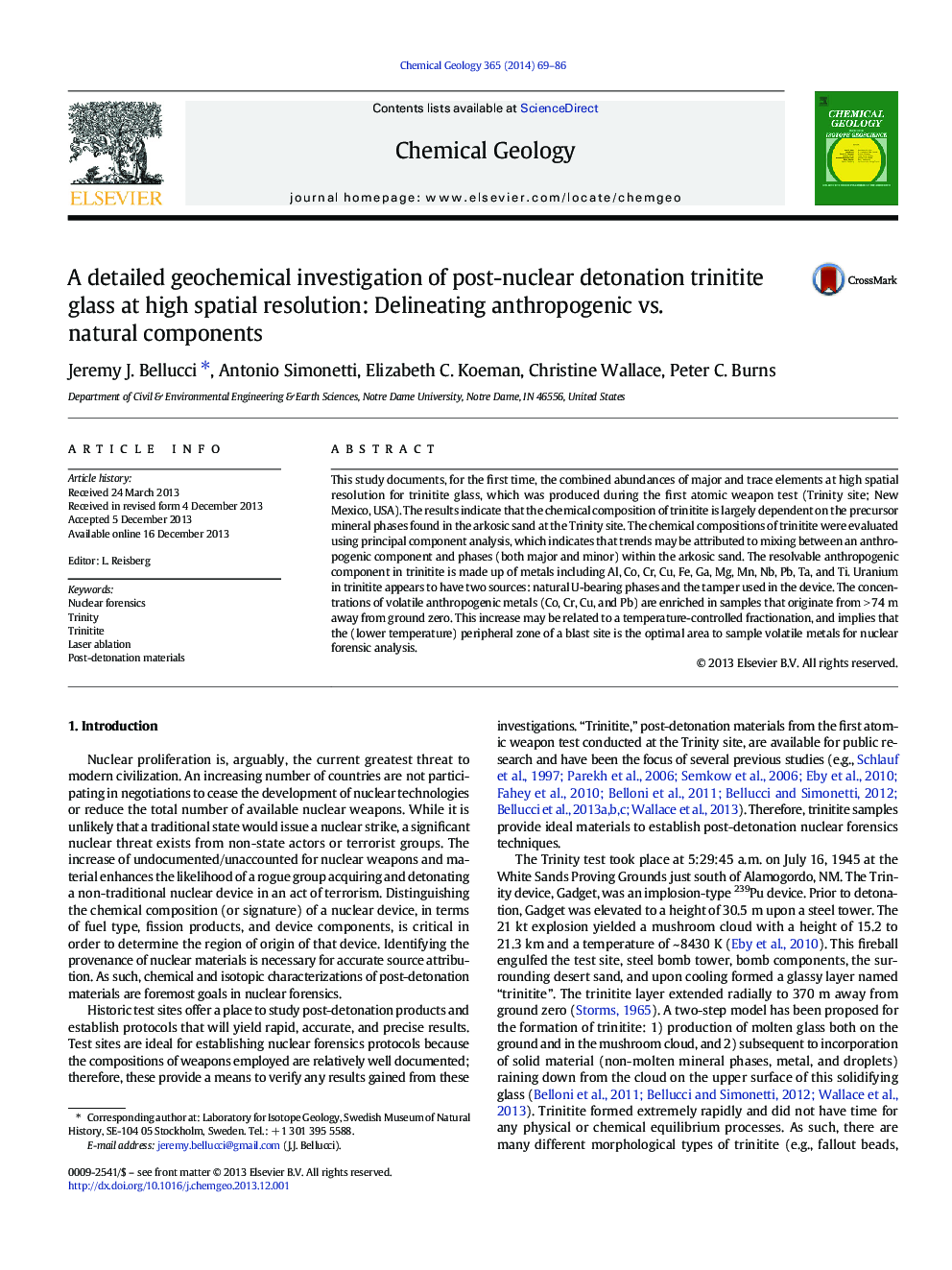| کد مقاله | کد نشریه | سال انتشار | مقاله انگلیسی | نسخه تمام متن |
|---|---|---|---|---|
| 6436737 | 1637605 | 2014 | 18 صفحه PDF | دانلود رایگان |
- The first in situ major and trace element analyses of post-nuclear detonation materials are presented.
- Natural vs. anthropogenic components in nuclear melt glass were separated.
- The origin of uranium in nuclear melt glass is discussed.
- The best locations for forensic sampling of volatile metals are established.
This study documents, for the first time, the combined abundances of major and trace elements at high spatial resolution for trinitite glass, which was produced during the first atomic weapon test (Trinity site; New Mexico, USA). The results indicate that the chemical composition of trinitite is largely dependent on the precursor mineral phases found in the arkosic sand at the Trinity site. The chemical compositions of trinitite were evaluated using principal component analysis, which indicates that trends may be attributed to mixing between an anthropogenic component and phases (both major and minor) within the arkosic sand. The resolvable anthropogenic component in trinitite is made up of metals including Al, Co, Cr, Cu, Fe, Ga, Mg, Mn, Nb, Pb, Ta, and Ti. Uranium in trinitite appears to have two sources: natural U-bearing phases and the tamper used in the device. The concentrations of volatile anthropogenic metals (Co, Cr, Cu, and Pb) are enriched in samples that originate from >Â 74Â m away from ground zero. This increase may be related to a temperature-controlled fractionation, and implies that the (lower temperature) peripheral zone of a blast site is the optimal area to sample volatile metals for nuclear forensic analysis.
Journal: Chemical Geology - Volume 365, 4 February 2014, Pages 69-86
